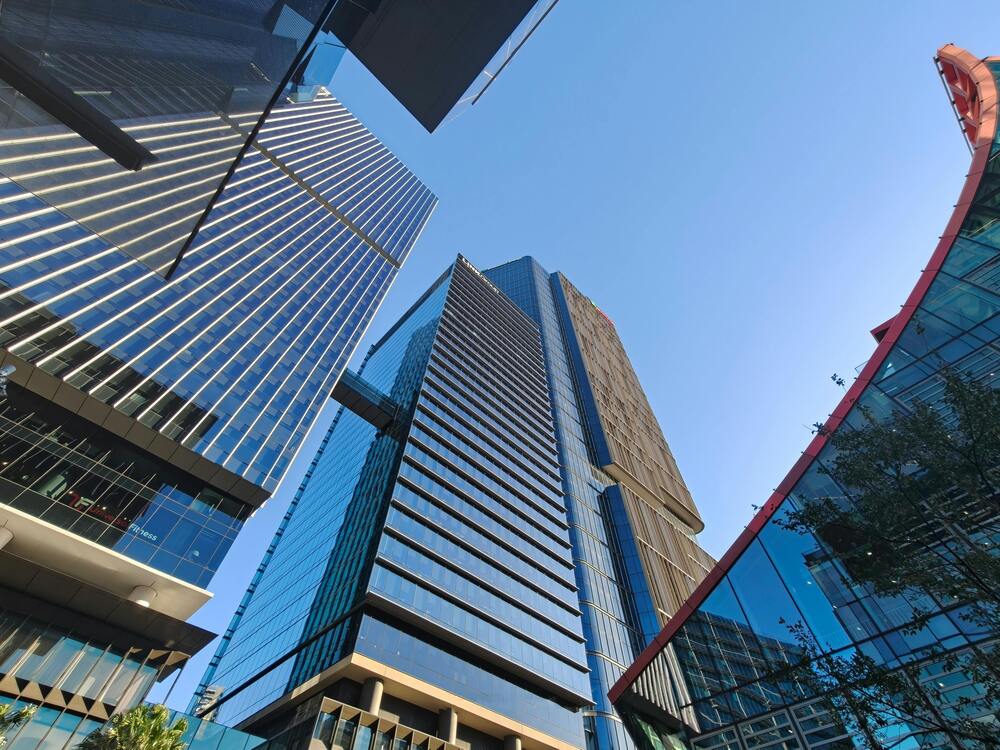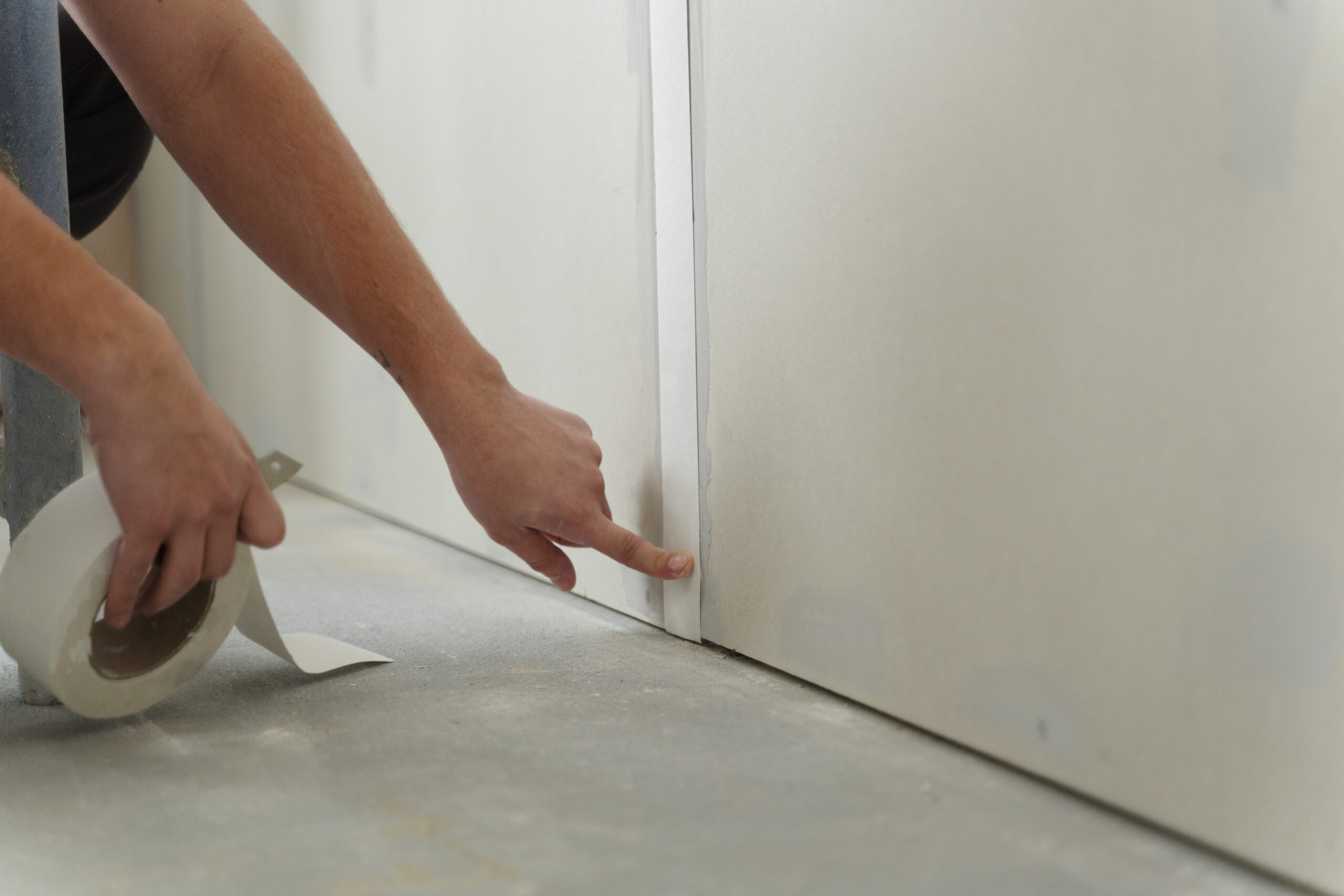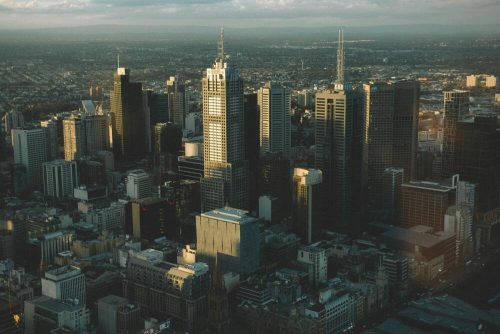Concrete is one of the most durable and widely used construction materials in the world. From office buildings and warehouses to schools and apartment complexes, it forms the backbone of countless structures. But while concrete is strong, it’s not indestructible. Over time, it can develop cracks, chips, and other forms of wear and tear that, if left unchecked, can compromise the safety, appearance, and longevity of a building.
In this guide, we’ll explore the most common concrete building issues, why they occur, how they can be fixed, and when it’s time to call in the experts for all types of building maintenance and repair.
You’ll learn:
- The most common causes of concrete damage in buildings.
- How to identify and repair cracks, spalling, scaling, and corrosion.
- Simple preventive maintenance tips to extend your concrete’s lifespan.
- When to tackle repairs yourself and when to call the pros.
- How Jim’s Handyman and our commercial building maintenance service can help keep your property safe, durable, and looking its best.
Why Concrete Deteriorates

Even though concrete can last for decades, it is still subject to environmental and structural stressors. Common causes of deterioration include:
- Weathering – Exposure to rain, sun, and fluctuating temperatures causes concrete to expand and contract, leading to cracks.
- Freeze-thaw cycles – In colder climates, water seeps into pores and cracks, freezes, and expands—causing damage over time.
- Chemical exposure – Salts, acids, and other chemicals can weaken concrete and corrode steel reinforcement.
- Heavy loads – Overloading floors, pavements, or driveways can cause stress fractures.
- Poor installation – Incorrect mixing, curing, or reinforcement can shorten the lifespan of concrete.
Understanding the root cause of deterioration is essential for selecting the right repair method.
Common Concrete Issues in Buildings

Here are some of the most frequent problems property owners encounter with concrete structures:
1. Cracks
Cracks are the most common sign of concrete damage. They can be hairline cracks caused by shrinkage or wider structural cracks due to settling or overload.
Why they matter:
Small cracks can allow moisture to enter, leading to corrosion of steel reinforcement and eventual structural weakness.
How to fix:
- For small cracks – Use an epoxy or polyurethane injection to seal and restore integrity.
- For larger cracks – Structural repair with epoxy bonding agents and possibly rebar reinforcement is required.
Pro tip: If cracks keep reappearing after repair, it’s a sign of underlying movement or load issues.
2. Spalling (Surface Flaking)
Spalling occurs when the surface of concrete flakes or chips away. It’s often caused by freeze-thaw damage, poor finishing, or corrosion of embedded steel.
Why they matter:
Spalling isn’t just an eyesore—it can expose rebar to moisture, accelerating corrosion and compromising structural integrity.
How to fix:
- Remove loose concrete and clean the affected area.
- Apply a bonding agent, then patch with repair mortar.
- Seal the surface to prevent moisture penetration.
Commercial property owners—spalling on walkways, steps, or car parks can be a liability risk.
3. Scaling
Scaling is when the concrete surface peels away in thin layers, often caused by deicing salts or poor finishing during installation.
Why they matter:
Left untreated, scaling can worsen with each winter season and eventually expose the underlying concrete to further damage.
How to fix:
- Light scaling: Apply a surface sealer or polymer-modified overlay.
- Severe scaling: Remove damaged concrete and resurface the entire area.
4. Efflorescence
Efflorescence appears as a white, powdery deposit on the surface. It’s caused by water moving through the concrete and leaving behind mineral salts.
Why they matter:
While mostly cosmetic, efflorescence can indicate moisture infiltration that may lead to more serious issues.
How to fix:
- Brush off dry deposits.
- Use a mild acid solution (such as diluted vinegar) for stubborn deposits.
- Address the underlying moisture issue to prevent recurrence.
5. Corrosion of Reinforcement
Steel reinforcement within concrete can rust when exposed to water and oxygen. This expansion creates internal pressure, leading to cracks and spalling.
Why they matter:
Corroding rebar significantly weakens structural strength and must be addressed immediately.
How to fix:
- Remove damaged concrete around the steel.
- Clean and treat the steel with anti-corrosion coating.
- Patch the concrete with a suitable repair mortar.
6. Uneven Settlement

Settlement occurs when the soil beneath a concrete slab shifts or compresses, causing uneven surfaces.
Why they matter:
Uneven floors or pavements can be trip hazards and may cause further cracking.
How to fix:
- Slabjacking (Mudjacking) – Pumping material beneath the slab to raise it back to level.
- Replacement – For severe settlement, replacing the slab may be the only option.
For commercial buildings, uneven surfaces can be a safety liability. Regular inspections and maintenance can spot settlement early and prevent costly replacements.
How to Prevent Concrete Damage
Preventive maintenance is far more cost-effective than major repairs. Here are some key strategies:
- Seal regularly – Apply a high-quality sealer every 2–3 years to protect against moisture and chemicals.
- Control water drainage – Ensure gutters, downspouts, and grading direct water away from concrete.
- Use proper deicing products – Avoid harsh salts that can accelerate damage.
- Address cracks early – Small repairs prevent larger structural issues.
- Schedule professional inspections – Annual checks from a trusted commercial building maintenance service can catch problems before they worsen.
DIY vs. Professional Repairs

While small cosmetic repairs may be tackled as DIY projects, structural or widespread issues require professional expertise.
DIY repairs are suitable for:
- Small, non-structural cracks.
- Minor surface patches.
- Cleaning and sealing.
Professional repairs are best for:
- Structural cracks.
- Corroded reinforcement.
- Large-scale spalling or scaling.
- Settlement issues.
Step-by-Step Example: Repairing a Spalled Concrete Surface
To illustrate how professional repairs work, here’s a simplified process for fixing a spalled section of concrete:
- Inspection – Identify the extent of the damage and check for underlying causes like water infiltration.
- Surface preparation – Remove loose concrete with a chisel or grinder and clean the surface thoroughly.
- Treat reinforcement – If rebar is exposed, clean it and apply anti-corrosion coating.
- Apply bonding agent – Ensures the new repair material adheres properly.
- Patch with repair mortar – Use a polymer-modified repair mortar for durability.
- Cure the repair – Keep the area moist and covered for the recommended curing time.
- Seal – Apply a protective sealer to prevent future damage.
The Cost of Ignoring Concrete Repairs
Delaying repairs can lead to:
- Higher repair costs later.
- Structural safety risks.
- Water leaks and moisture damage.
- Increased liability from trip hazards or falling debris.
- Reduced property value.
Commercial building owners should be particularly proactive—damaged concrete can hurt your business’s image and deter clients.
How Jim’s Handyman Can Help

Concrete damage can creep up slowly, but the costs of neglect add up quickly. That’s where Jim’s Handyman comes in. We offer:
- Concrete repairs for cracks, spalling, scaling, and settlement.
- Preventive maintenance to keep your building safe and looking professional.
- Commercial building maintenance services tailored to your business needs.
- Experienced technicians who ensure every job is completed to the highest standard.
Whether you own a single retail shop or manage a large commercial complex, our team can handle everything from minor touch-ups to full-scale concrete restoration.
Final Thoughts
Concrete is tough, but it’s not invincible. By recognising common issues early—like cracks, spalling, scaling, and corrosion—you can save time, money, and headaches down the road. While DIY fixes work for small problems, larger or recurring issues call for professional expertise.
With regular upkeep and timely repairs, your building’s concrete structures can stay strong and attractive for decades. And when you need expert help, Jim’s Handyman is ready to deliver prompt, professional service—keeping your property in top condition so you can focus on what you do best.

